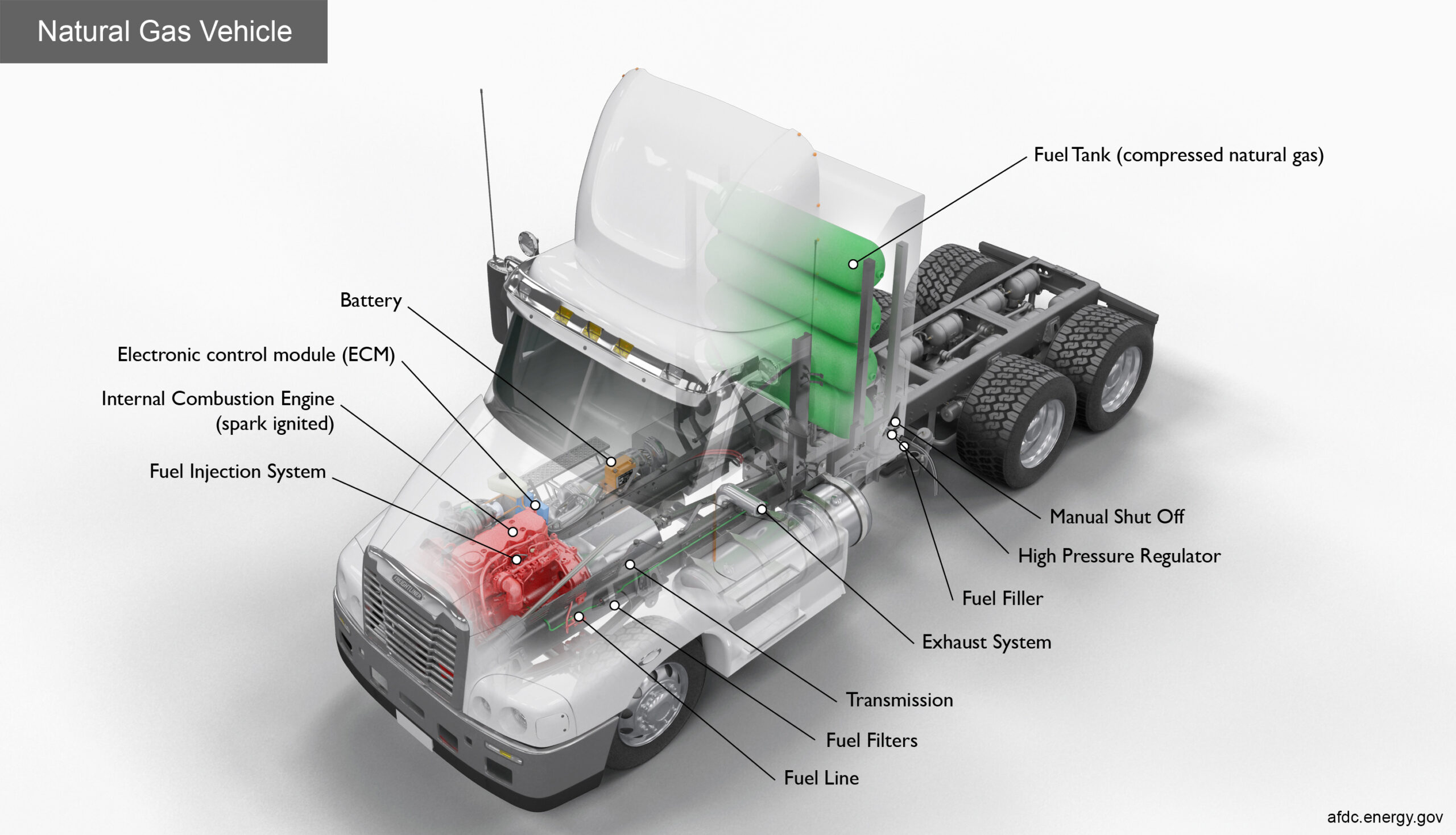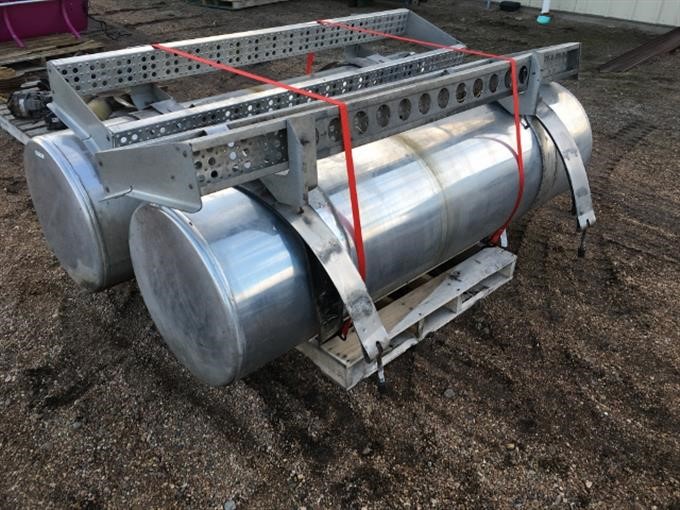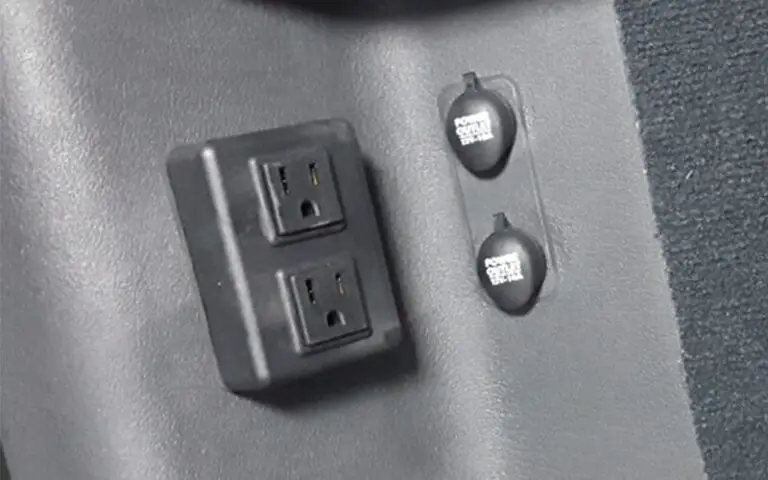
Semi trucks typically have fuel tanks ranging from 50 to 300 gallons in capacity. The size of the fuel tanks on semi trucks varies from model to model, with larger tanks generally seen in long-haul trucks requiring extended driving ranges.
Semi trucks play a vital role in transporting goods across long distances, and their fuel tanks need to accommodate the demands of long-haul travel. The capacity of fuel tanks on semi trucks can impact the efficiency and range of the vehicle, as well as the frequency of refueling stops.
Understanding the size of these fuel tanks is important for truckers, fleet managers, and anyone involved in the logistics of the transportation industry. We will explore the factors that determine the size of fuel tanks on semi trucks and their implications for the industry as a whole.
Navigate As You Want: [show]
Average Size Of Fuel Tanks On Semi Trucks
When it comes to the average size of fuel tanks on semi trucks, there are two main types to consider: single fuel tanks and dual fuel tanks. Single fuel tanks are the most common option and typically have a capacity range of 100 to 300 gallons. These tanks provide sufficient fuel storage for most long-haul trips, allowing drivers to travel long distances without frequent refueling.
Dual fuel tanks, on the other hand, offer a larger fuel capacity, with each tank typically holding around 150 to 250 gallons. This configuration can provide a total fuel capacity of up to 500 gallons, offering greater range and reducing the need for refueling stops during extended trips.
Having a larger fuel tank capacity is advantageous for truckers who frequently travel long distances or operate in remote areas with limited fueling options. It helps them reduce downtime and maximize their time on the road, increasing efficiency and productivity. Additionally, larger fuel tanks can be beneficial in terms of cost savings, as they allow for bulk fuel purchases at potentially lower prices.
Factors Affecting Fuel Tank Size
Fuel tank size on semi trucks can vary significantly depending on several factors. One of the primary factors affecting fuel tank size is the type and configuration of the truck. Different truck types and configurations can have different fuel tank capacities, impacting the overall range and fuel efficiency of the vehicle.
Another key factor that affects fuel tank size is fuel efficiency. Trucks designed with higher fuel efficiency may have smaller fuel tanks while still achieving the necessary range. On the other hand, trucks with lower fuel efficiency may require larger fuel tanks to cover the same distance.
Additionally, the distance and route a semi-truck is expected to travel can also influence the size of the fuel tank. Trucks operating on longer routes or in remote areas may require larger fuel tanks to ensure they can travel the necessary distance without refueling frequently.
Benefits Of Large Fuel Tanks
Larger fuel tanks on semi trucks offer significant benefits, such as extended range and reduced refueling frequency. With larger tanks, trucks can travel longer distances without needing to stop for fuel, improving efficiency and reducing downtime. This not only saves time but also increases productivity by allowing drivers to cover more ground without interruptions. Additionally, larger fuel tanks can help drivers save money by taking advantage of better fuel prices at certain locations, as they have the ability to carry more fuel, reducing the need to purchase at higher-cost stations. The convenience of less frequent stops also contributes to driver satisfaction and overall fleet performance. As a result, big fuel tanks on semi trucks offer a range of advantages that enhance operational effectiveness and cost savings.
Credit: www.quora.com
Challenges With Large Fuel Tanks
Large fuel tanks on semi trucks pose several challenges, including increased weight and higher cost. The size of fuel tanks is a critical factor in determining how far a truck can travel without refueling. However, larger tanks also mean additional weight, which can negatively impact a truck’s fuel efficiency and overall performance. The extra weight can lead to higher fuel consumption and slower acceleration, costing trucking companies more in operational expenses.
Moreover, large fuel tanks come with a higher price tag. The cost of manufacturing and installing bigger tanks is more expensive compared to smaller alternatives. Additionally, the additional weight they add can require upgrades to other vehicle components, such as suspension and brakes, further increasing the overall costs.
Despite these challenges, many trucking companies opt for larger fuel tanks to minimize the need for frequent refueling stops. However, it is crucial for them to carefully analyze the trade-offs between tank size, weight, and cost to ensure optimal fuel efficiency and profit margins.
Innovations In Fuel Tank Technology
– The size of fuel tanks on semi trucks has seen significant improvements in recent years. One area of innovation is the use of lightweight materials, which allow for larger tank capacities without adding too much weight to the overall truck. This has resulted in improved fuel efficiency and extended driving ranges, benefiting both truck drivers and fleet operators.
– Another important aspect of fuel tank technology is the incorporation of improved safety features. These features include reinforced tank walls to prevent leaks or ruptures in the event of an accident, as well as advanced monitoring systems to detect any potential fuel leaks or overflows. These advancements help to minimize the risk of hazardous situations and ensure the safe transportation of fuel on the roads.

Credit: www.bigiron.com

Credit: www.internationalusedtrucks.com
Frequently Asked Questions On How Big Are Fuel Tanks On Semi Trucks
How Big Are Fuel Tanks On Semi Trucks?
Fuel tanks on semi trucks can vary in size depending on the model and purpose of the truck. On average, fuel tanks range from 100 to 300 gallons. However, some specialized trucks may have larger tanks, reaching up to 500 gallons.
It’s important to note that larger tanks allow for longer driving distances and reduce the need for frequent refueling.
How Much Fuel Can A Semi Truck Hold?
A semi truck’s fuel capacity depends on the size of its fuel tanks. On average, a semi truck can hold between 100 to 300 gallons of fuel. This capacity allows for long hauls without frequent refueling stops. However, some specialized trucks may have larger tanks, enabling them to carry up to 500 gallons of fuel.
How Far Can A Semi Truck Travel On A Full Tank Of Fuel?
The distance a semi truck can travel on a full tank of fuel depends on various factors, such as its fuel efficiency, load weight, and driving conditions. On average, a semi truck can travel around 500 to 1000 miles on a full tank.
However, this estimate can vary significantly, with some trucks capable of reaching distances over 1500 miles before refueling.
What Factors Affect A Semi Truck’s Fuel Efficiency?
Several factors can impact the fuel efficiency of a semi truck. These factors include driving speed, aerodynamics, tire pressure, maintenance, cargo weight, and route conditions. By optimizing these variables, truck drivers and fleet managers can improve fuel efficiency and reduce costs associated with fuel consumption.
Conclusion
The size of fuel tanks on semi trucks varies depending on several factors, including the type of truck and its intended use. Larger tanks are typically found on long-haul trucks to minimize the need for frequent refueling. These tanks have a capacity ranging from 100 to 300 gallons, ensuring trucks can travel long distances without stopping for fuel.
However, it’s important for truck drivers and fleet owners to strike a balance between tank size and weight limitations. By considering the specific requirements of their operations, they can optimize fuel efficiency and minimize costs.



